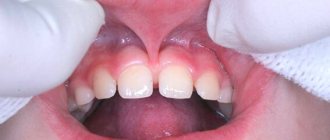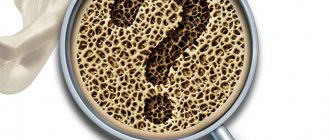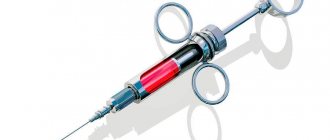What is the essence of the one-day implantation method?
The main obstacle to restoring a natural tooth with an artificial one is the patient’s bone deficiency. For example, if a tooth was removed a long time ago and a gap has formed in its place, the bone in this area gradually atrophies. If you implant an implant immediately after removing the root in the clinic, as is done with one-stage implantation, the bone does not have time to resolve. In addition, around specially shaped implants, the bone tissue will regenerate naturally. In short, the body itself will “work” to stabilize the implant in the bone immediately after the implantation operation. Thus, after a few months it will be possible to replace the temporary crown with a full-fledged permanent one.
Note! If we are talking about restoring a distant tooth that is not visible when smiling and talking, you can do without a temporary crown. When it comes to implantation surgery in the smile zone, the doctor can put a beautiful crown on a titanium implant, which will fully correspond in its aesthetic and functional characteristics to a natural tooth.
Mechanism of development of gaps
The development of teeth and their location in the dentition is influenced by a large number of factors. This includes genetics and various external influences. The most significant factors include:
- violation of the deadlines for replacing milk teeth with permanent ones;
- untimely loss of baby teeth;
- short frenulum of the upper lip;
- displacement of teeth in the dentition due to loss or absence of tooth eruption;
- excessive growth of bone tissue of the palate;
- excess number of teeth in the dentition;
- insufficient width of the crowns of the teeth in relation to the length of the jaw;
- bad dental habits: chewing a pen, holding a pencil or other objects in your teeth;
- jaw injuries.
For whom is implantation in one day relevant?
Most often, one-stage implantation is performed in the smile area. When a patient urgently needs to restore a tooth in the visible area. Despite the fact that the functional load on the teeth in the smile area is small, the aesthetic component plays a big role here.
Note! If it is necessary to restore lateral or distant crowns, simultaneous implantation by a doctor is extremely rarely prescribed. The teeth of these groups, as a rule, are subject to a large chewing load. Accordingly, there is a high risk of implant loosening even at the stage of its adaptation in the jaw.
Immediate loading is also acceptable for total implantation. In the case when a patient has all his teeth removed in the clinic, several implants are installed instead of them, on which temporary crowns are placed. Since this type of implantation distributes pressure evenly across all implants, the risk of loosening is reduced. The doctor installs temporary crowns, which the patient wears until the permanent dentures are ready.
It is important! The fundamental difference between one-day implantation and the traditional two-stage protocol is the simultaneous installation of both a titanium implant and a temporary plastic crown in the socket after surgical removal of the tooth.
Types of diastemas
Gaps between teeth are grouped depending on the presence of certain signs. First of all, diastemas are divided into:
- true, which remains in a person after changing teeth and completing the formation of a permanent bite;
- false, which appears at different stages of development of the dental system and closes on its own as all permanent teeth erupt in the jaw.
The shape of the diastema can be:
- symmetrical, if the incisors are at the same distance from each other;
- asymmetrical, if only one tooth deviates to the side or one of the pair is inclined more than the other.
When is implantation with immediate loading possible?
The main condition for immediate implantation is the presence of sufficient bone tissue. The minimum volume of bone to withstand pressure is approximately 2 mm. If this volume is not enough, but the patient is recommended to have the tooth removed, prosthetics are postponed until the bone for the future implant is built up. For these purposes, bone grafting is used - building up artificial material or transplanting your own (an additional procedure in the clinic).
Note! As part of the surgical stage, the doctor can perform so-called simultaneous augmentation - filling a fresh socket with a synthetic material that imitates the properties of natural bone. Over time, the material is absorbed, but the implant is securely positioned in the bone.
Other important conditions for the operation:
- absence of granulomas and cysts at the root apex;
- relatively healthy gums;
- absence of inflammatory processes around the tooth being restored;
- an entire interradicular septum when it comes to multi-rooted teeth.
Implantation with immediate loading in one day is not recommended in the following cases:
- significant loss of bone tissue;
- bone diseases, osteoporosis;
- allergy to materials used for implantation;
- oncological processes;
- severe mental disorders, etc.
It is also recommended to postpone the operation if the patient is diagnosed with a malocclusion.
Who needs bone grafting? Atraumatic tooth extraction.
Some of you, having decided to place an implant, hear from the doctor that it is impossible to place it.
A bone is missing. In such cases, bone grafting is required.
This frightens and surprises many at the same time.
It is surprising, first of all, that surgery to increase bone volume is often more energy-intensive and, accordingly, costs much more than installing the implant itself.
Today I will talk about in what cases and who needs bone grafting.
Let's start with the simplest.
Some of you may have missing bone tissue. And some of you have it. Why?
There can be only 3 reasons.
Firstly , this may be the result of some general disease of the body, as a result of which bone resorption occurs.
But in practice this is extremely rare.
Secondly. Too much time passes after tooth extraction. Sometimes more than ten years.
In such cases, bone tissue without load simply atrophies and its volume decreases.
This can be compared to muscles, which, without physical activity, also shrink and lose shape over time.
How can this be prevented?
Much easier than you might think.
You just need to place the implant on time.
When the implant is installed, the bone begins to receive adequate load. In this case, both atrophy and resorption immediately stop. And forever.
And thirdly. The most common cause of bone loss is improper tooth extraction.
More than 90% of all problems with bone tissue arise precisely because of improper removal!
Why does this happen? Don’t implant surgeons know about this?
Experienced implantologists certainly know.
But unfortunately, teeth are very often removed by those who have no idea how to do it.
Russian universities have not and still do not undergo atraumatic tooth extraction, which preserves bone tissue as much as possible.
It’s just that in Russian dental universities, implantology is a fairly young field.
And bone preservation is necessary just for further implantation.
When removing a tooth, some surgeons simply smash the socket of the extracted tooth into pieces.
If the tooth is multi-rooted, then, as a rule, during removal the interradicular bone septum is also destroyed.
Of course, after such removals there is a huge loss of bone. Which then has to be restored very energy-intensively and sometimes very expensively.
How should you remove teeth, you ask?
I will give just one example from my practice.
It will be understandable to all patients who, of course, do not have a dental education.
The picture of the lower molar showed enormous destruction of bone tissue due to a crack in the root of the tooth.
To check, I placed a special gutta-percha pin in the fracture line to assess the size of the defect.
There was no doubt that the tooth had to be removed.
The question just arose: how?
90% of surgeons looking at this picture would say that everything is very simple.
There is little bone, the tooth does not hold well. We take tongs and remove.
Yes! But at the same time, the half-destroyed interroot septum will be removed along with the roots. This goes without saying.
And then a huge bone defect is formed, which will have to be very difficult to restore.
What did I do?
I simply sawed a multi-rooted tooth into 2 separate small teeth. And after that, each one was deleted separately.
With such an atraumatic removal, not only the interradicular septum, but also the periosteum and mucosa remained intact.
Of course, this took 3 minutes more time than usual removal, or rather “pulling out” this tooth.
But I saved the bone tissue for subsequent implantation.
With these extra 3 minutes in the chair, I saved the patient at least 2 thousand dollars. And he saved me from a serious operation and half a year of suffering to engraft the transplanted bone block.
Also, do not forget that even in cases where a bone transplant operation is successful, your own bone tissue is always not only cheaper, but also much better than artificial one.
Sometimes I hear from patients: “I’ll go and remove the tooth somewhere cheaper, and then I’ll come to you to place an implant.”
Of course, sometimes you can get lucky. But unfortunately, there are much more often cases when the desire to save 1 thousand rubles leads to the loss of a huge amount of money to restore a bone defect.
Here the expression is more relevant than ever: the miser pays twice.
In conclusion, I will reassure you.
A large dental center, which usually has several experienced maxillofacial surgeons on its staff, can certainly restore any bone tissue defect today.
Whether it's a bone block graft, sinus lift, or simply adding artificial bone.
And of course we are not the only ones in Russia who can do this.
But let me remind you that any bone defect is much easier and, of course, much cheaper to prevent than to restore later.
Is it possible to install a permanent crown during implantation in one day?
Yes, such cases do occur. To do this, it is necessary that the patient’s bone tissue is in ideal condition at the time of implantation. Special clinic equipment must also be used to clearly plan the implantation process with immediate loading. As an option, the R2Gate program is used for this, thanks to which you can plan the treatment process on a turnkey basis. Here the configuration of the crowns is calculated in such a way as to obtain maximum guarantees of successful prosthetics.
Trema or diastema?
In adults, we most often see noticeable disproportionate gaps ranging in size from 0.3 to 0.7 mm between the central incisors of the upper, and less commonly, the lower jaw. These are diastemas. As long as they do not affect the functioning of the dental system and clarity of speech, diastema is regarded as a normal variant. If this anomaly has unpleasant consequences, it is better to involve a dentist in the case.
The spaces between any other teeth on the jaw are called teeth. They are the norm for children with primary and transitional dentition, when the width of the crowns of primary teeth remains constant, and the jaw arch lengthens month by month. In adults, trema is always a problem.
The reasons for the development of three and diastemas are various. This must be taken into account when planning examination and treatment.
All the competitive advantages of implantation with immediate loading
The main advantages of one-stage implantation:
- Restoring aesthetics. Even with a temporary crown. After implantation, the tooth looks like a natural one. The patient can talk freely, smile, without worrying about the aesthetic component.
- The functions of an artificial tooth are similar to those of a natural one. In this case, the new tooth after implantation receives an acceptable load, thanks to which regeneration processes actively occur. The implant naturally integrates with biological tissues. As a result, the patient receives a new and strong tooth, which in all respects corresponds to the natural one.
- Ideal fit of the crown to the gum. This is achieved, among other things, through the installation of temporary crowns. Quite often, after implantation, the gum undergoes changes (changes shape and contour, there are no clear boundaries) - this is especially visible when, after installing a permanent crown, a gap forms between the prosthesis and the gum. To avoid this, temporary crowns are installed after immediate implantation. They promote active gingival regeneration. Visually, these crowns look quite natural and perform an excellent functional load.
- Reduced number of surgical interventions. As a result, there is less stress for the body. The tissues heal much faster than with classical implantation.
Possible nuances of one-stage implantation
The risk of rejection due to overload is one of the main nuances. For example, if the patient does not follow the doctor’s recommendations or tried to eat something solid during the period of active implantation.
Note! To prevent displacement or loosening of the implant in the initial period after implantation, you can use a special protective abutment. The essence of its work: if there is a large load on the crown, the upper plastic cap is separated from the abutment, while the implant itself will remain motionless in the bone. The abutment, as it were, takes on all the risks of overload, limiting the pressure on the titanium implant.
What are the requirements for single-stage dental implantation to be carried out with the best results?
Specialists from the Zuub clinic have identified a number of requirements under which there is a high probability of immediate implantation without complications:
- tooth extraction without complications and injuries - the less problematic the surgical tooth extraction was, the more favorable the prospects for successful implant survival;
- there should be no inflammatory processes in the acute and chronic stages, so that the pathological infectious environment does not spread to nearby tissues;
- the presence of a “dense” gum biotype – the doctor will determine this point at the diagnostic stage.
How much does implantation cost in one day?
The cost of dental implantation per day depends on the following factors:
- the number of teeth that require restoration;
- type of artificial root and manufacturer;
- types of temporary and permanent crowns;
- type and manufacturer of the gum former;
- level of complexity of implantation;
- the need for additional treatment, etc.
The cost of one-stage turnkey implantation at the Zuub clinic ranges from 19,500 rubles per unit - these are budget options. Restoration with middle-class systems will cost the patient approximately 30–50 thousand rubles per tooth. Indeed, in many cases, one-step dental implantation is more preferable than classical one, since it can provide ready-made teeth in one visit to the doctor, that is, “here and now.”
Are you interested in the service? Do you want to restore a tooth in just one day at an affordable price? Or would you like to know for sure whether a one-step implantation procedure with crown prosthetics is right for you? Book a consultation with a doctor at the Zuub clinic right now to make your dream of a beautiful and full smile come true in the very near future!









